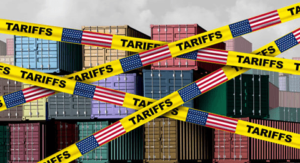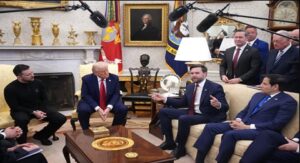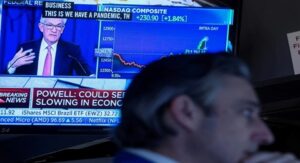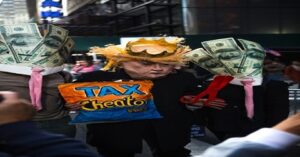
Unveiling Indonesia's Economic Myths
Indonesia’s economic myths paint a vivid picture of the political prospect, where the atmosphere is charged with the resonance of familiar pledges as the nation prepares to elect its next president on February 14th. For nearly two decades, a recurring theme has dominated the discourse: the ambitious commitment to elevate the country’s growth rate to a steady 7%.
This refrain, championed by leaders both past and present, such as Joko Widodo and Susilo Bambang Yudhoyono, has become ingrained in the nation’s consciousness like a well-worn melody. However, despite these assurances, Indonesia’s economy has struggled to consistently achieve this target.
As the fervor of the election season intensifies, candidates once again echo this familiar tune, each offering their own variation on how to ignite economic prosperity in this vibrant democracy.
Table of Contents
Indonesia’s Economic Myths
In the dynamic environment of Indonesian politics, the recurring theme of attaining a 7% growth rate has endured for more than twenty years. With the impending presidential election on February 14th, this commitment resonates anew throughout the nation.
Yet, within this rhetoric lies a stark truth, casting doubt on the viability of this well-worn narrative. Despite the promise of progress, complexities persist, prompting a reevaluation of the nation’s trajectory. Indonesia’s economic myths, woven into the fabric of its political discourse, challenge conventional wisdom and demand a deeper examination of the realities at hand.
As Indonesia navigates the intricacies of governance and development, the pursuit of economic growth remains a cornerstone, albeit one that demands critical scrutiny and a nuanced understanding of the challenges ahead.
Here are 7 key points elucidating Indonesia’s enduring quest for economic growth:
1. Repetition in Political Campaigns
In Indonesia, a familiar pattern emerges in the political arena, marked by recurring campaign promises. Over almost two decades, presidential candidates have consistently pledged to boost the nation’s growth rate to a lofty 7%.
Indonesia’s economic myths are perpetuated as voters prepare for the upcoming February 14th elections, with this oft-repeated commitment taking center stage once more. Despite its familiarity, questions linger regarding the feasibility and efficacy of such pledges, echoing past cycles of aspiration and reality.
The electorate remains vigilant, seeking not just promises but tangible strategies to address pressing economic challenges and fulfill the aspirations of the Indonesian people. The stage is set for another chapter in Indonesia’s political narrative, where rhetoric meets the test of governance.
2. Decades of Unfulfilled Promises
Indonesia’s economic myths persist as presidents, from Joko Widodo to Susilo Bambang Yudhoyono, have often risen to power promising economic prosperity. Yet, the stark truth contrasts with their pledges. Indonesia’s economy has faltered, unable to sustain a growth rate exceeding 5% consistently.
The last robust expansion, reaching 7%, dates back to 1996, just before the tumultuous Asian Financial Crisis. Despite leaders’ assurances, the nation grapples with persistent economic challenges, hindering the realization of promised growth.
Indonesia’s struggle underscores the complexities of governing a diverse and evolving economy, where rhetoric frequently clashes with reality, leaving citizens longing for sustained progress beyond political rhetoric.
3. Jokowi’s Legacy and Economic Achievements
Outgoing President Jokowi’s economic legacy is a nuanced tapestry of achievements and challenges, shadowed by Indonesia’s economic myths. Indonesia’s progress under his tenure is evident in infrastructure advancements and increased foreign investment.
However, the nation grapples with the elusive goal of sustained high growth. Jokowi’s emphasis on a nickel-centric industrial policy presents both opportunities and risks. While it holds promise for economic diversification and growth, it also confronts hurdles and uncertainties.
Ultimately, his departure leaves Indonesia poised at a crucial juncture, where the path forward necessitates navigating the complexities of balancing economic development with managing potential pitfalls in the pursuit of prosperity.
4. The Nickel Focused Industrial Policy
Indonesia’s economic myths surrounding nickel, propelled by its abundant reserves vital for electric vehicle (EV) batteries, have drawn global interest. Implementing a ban on raw ore exports to promote domestic processing has lured significant investment from prominent automakers.
Nevertheless, analysts caution against overreliance on this strategy, emphasizing potential risks inherent in a singular nickel-centric approach. Emerging battery technologies, which might veer away from nickel dependence, present uncertainties for Indonesia’s long-term economic plans.
Balancing the pursuit of nickel-driven growth with the need for diversification becomes imperative to navigate future market shifts effectively. Indonesia’s trajectory in the EV battery sector underscores both its promise and the necessity for a nuanced, adaptable strategy in a rapidly evolving global aspect.
5. Missteps and Regulatory Hurdles
Despite successes in certain sectors, Indonesia grapples with regulatory hurdles that stifle innovation and investment diversification. Indonesia’s economic myths, including rules favoring domestically produced materials in solar panels and recent regulations impacting foreign tech investments, illustrate a reluctance to embrace openness fully.
Such restrictions hinder Indonesia’s competitiveness compared to its regional counterparts. Mandates favoring domestically sourced materials for solar panels, alongside recent policies affecting foreign technology investments, signal a cautious approach towards embracing complete openness. These constraints impede Indonesia’s competitive edge vis-à-vis neighboring nations.
Embracing a more progressive regulatory framework could unleash the nation’s potential, fostering a conducive environment for innovation and attracting diverse investments. Overcoming these hurdles is pivotal for Indonesia to strengthen its position in the global market and harness the full spectrum of opportunities available in the rapidly evolving economic view.
6. Trade Restrictions and Economic Policy Proposals
The ongoing election campaign in Indonesia reveals a glaring absence of clear economic policies, highlighting a pervasive ambiguity concerning the nation’s economic trajectory. This ambiguity exacerbates existing challenges such as enduring trade barriers and bureaucratic hurdles, which obstruct the business outlook, dissuading prospective investors and impeding export expansion.
Amidst these complexities, Indonesia’s economic myths further cloud the understanding of its economic realities. The absence of substantive proposals underscores a concerning lack of direction, raising doubts about the government’s ability to address crucial economic challenges effectively.
Without decisive action and coherent strategies, Indonesia risks stalling its economic progress and falling short of its potential for growth and prosperity.
7. Looking Ahead
As Indonesia undergoes demographic changes and experiences a rising dependency ratio, the need for impactful economic reforms intensifies. Failing to address structural hurdles and cultivate a favorable business climate jeopardizes the attainment of ambitious growth targets, such as the 7% goal.
This perpetuates a cycle of unmet political commitments, hindering progress. To break this cycle, concerted efforts must be made to implement effective policies that address demographic shifts, stimulate economic activity, and enhance competitiveness.
Without such measures, Indonesia risks stagnation and the widening of socio-economic disparities, underscoring the imperative for timely and decisive action in navigating its economic trajectory.
Bottom Line
In Indonesian political discourse, pledges of robust economic growth persist, yet translating these promises into tangible progress encounters formidable obstacles. Indonesia’s economic myths abound, shaping the narrative.
As citizens engage in electoral processes, they’re urged to assess not just the assurances presented but also the practicality and authenticity underpinning them. Sustainable advancement demands genuine restructuring and a unified resolve to tackle entrenched systemic issues.
Indonesia’s liberation from the cycle of deceptive growth vows hinges on earnest reforms and a strategic trajectory towards enduring prosperity.





